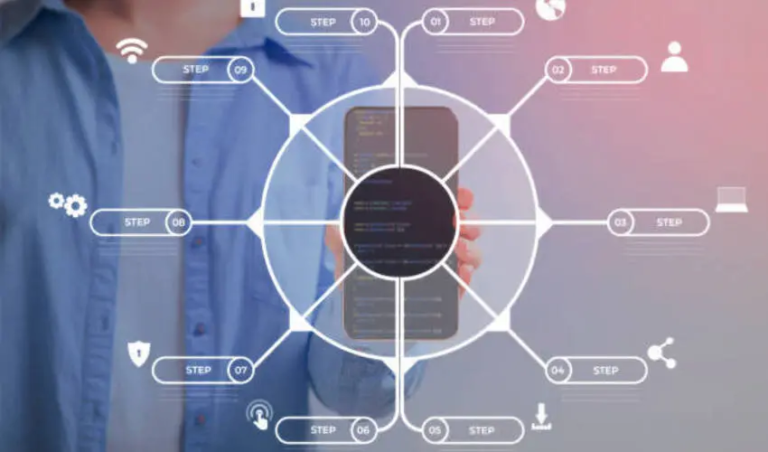Cyber threats are at their highest peak in today’s hyper-digital world. The old security models created for firewalls and perimeter security are not sufficient anymore for protecting sensitive data and system assets. That is where the Zero Trust security model meets requirements. Based on the tenet of “never trust, always verify,” it has become a universal gold standard among enterprises, including small teams.
Introduction
What else does Zero Trust mean?
It is a security framework that considers “no user, device, or application should ever be trusted; all requests to access systems must be verified, authenticated, and authorized.” The intent is to shrink down attack surfaces, cut down risks, and provide very granular security across systems and users.
It replaces the reliance on perimeter security with identity and contextual continuous verification throughout the life of the event, from requesting to granting access.
Key Principles of Zero Trust
- Always double-check, never trust
Every access attempt, whether from within or outside the network, needs to be verified and - Access with the Fewest Privileges
Devices and users are only granted the minimal amount of access required to complete their tasks. This lessens the possible harm if an account is compromised. - Micro-Segmentation
Resources and networks are separated into smaller areas. Attackers’ ability to move laterally is restricted because access is only allowed to the precise segment that a user or application requires. - Ongoing Validation and Monitoring
Decisions about access are not made once. To identify irregularities, the system continuously tracks user activity, device health, and behavior. - Assume Breach Zero Trust
The framework is designed to contain threats, limit damage, and identify them rapidly.
Zero Trust Architecture
A Zero Trust architecture consists of several core components that work together:
- Identity and Access Management (IAM): Enforces strong authentication (e.g., multi-factor authentication, biometrics) and verifies user identities.
- Endpoint Security: Ensures devices meet security requirements (e.g., updated patches, antivirus, compliance).
- Network Controls: Uses micro-segmentation, firewalls, and secure gateways to enforce granular access.
- Data Protection: Encrypts sensitive data in transit and at rest, ensuring confidentiality.
- Analytics and Monitoring: Detects unusual activities through logs, alerts, and AI-driven threat detection.
For small teams, this architecture doesn’t need to be overly complex. Cloud-native services, SaaS applications, and lightweight IAM solutions can provide Zero Trust principles without requiring enterprise-level budgets.
Implementing Zero Trust for Small Teams
Although putting Zero Trust into practice might seem overwhelming, it can be done piecemeal. The following are doable actions for small businesses:
- Begin by defining your identity
Implement multi-factor authentication (MFA) for all accounts, with a focus on project management, file sharing, and email. This establishes a robust initial layer of defense.
- Adopt the Least Privilege Principle
Regularly review the rights of access. Make sure that sensitive files or systems are only accessible by team members who require them. To make management easier, implement role-based access control, or RBAC.
- Safe Equipment
All laptops and mobile devices should have endpoint protection software installed. Turn on device encryption and automatic updates. To enforce security policies, use Mobile Device Management (MDM) if at all possible.
- Divide Up Your Network
Risks can be decreased, even for small teams, by keeping important services like internal communications, customer data, and finance tools separate. This can be accomplished without incurring significant infrastructure costs through virtual networks or cloud access policies.
- Keep an eye on and record activities
Make use of cloud providers’ integrated monitoring tools (such as AWS CloudTrail, Google Workspace, or Microsoft 365). These provide insight into file sharing, logins, and anomalous activity.
- Train Your Staff Human
Error is frequently the weakest link. Educate staff members on safe password usage, phishing scams, and the need for access controls.
Benefits for Small Teams
• Stronger Security Posture: Guards against external and inside threats.
• Scalability: Does not require a complete redesign as the team expands.
• Compliance-Friendly: Fulfills several legal requirements for data security.
• Peace of Mind: Lowers the possibility of disastrous breaches, which can be particularly harmful to small businesses.
Conclusion
Zero Trust is a framework and mindset that integrates best practices, policies, and tools rather than a single product. Adopting Zero Trust doesn’t have to be difficult or expensive for small teams. Any organization can make significant progress toward creating a safe, resilient environment by utilizing cloud-native security features, enforcing least privilege, and starting with identity.
Zero Trust is no longer optional—it is necessary in 2025 and beyond, as cyberattacks become more focused.
Frequently Asked Questions (FAQs)
It is a security framework that considers “no user, device, or application should ever be trusted; all requests to access systems must be verified, authenticated, and authorized.” The intent is to shrink down attack surfaces, cut down risks, and provide very granular security across systems and users. It replaces the reliance on perimeter security with identity and contextual continuous verification throughout the life of the event, from requesting to granting access.
• Stronger Security Posture: Guards against external and inside threats.
• Scalability: Does not require a complete redesign as the team expands.
• Compliance-Friendly: Fulfills several legal requirements for data security.
• Peace of Mind: Lowers the possibility of disastrous breaches, which can be particularly harmful to small businesses






